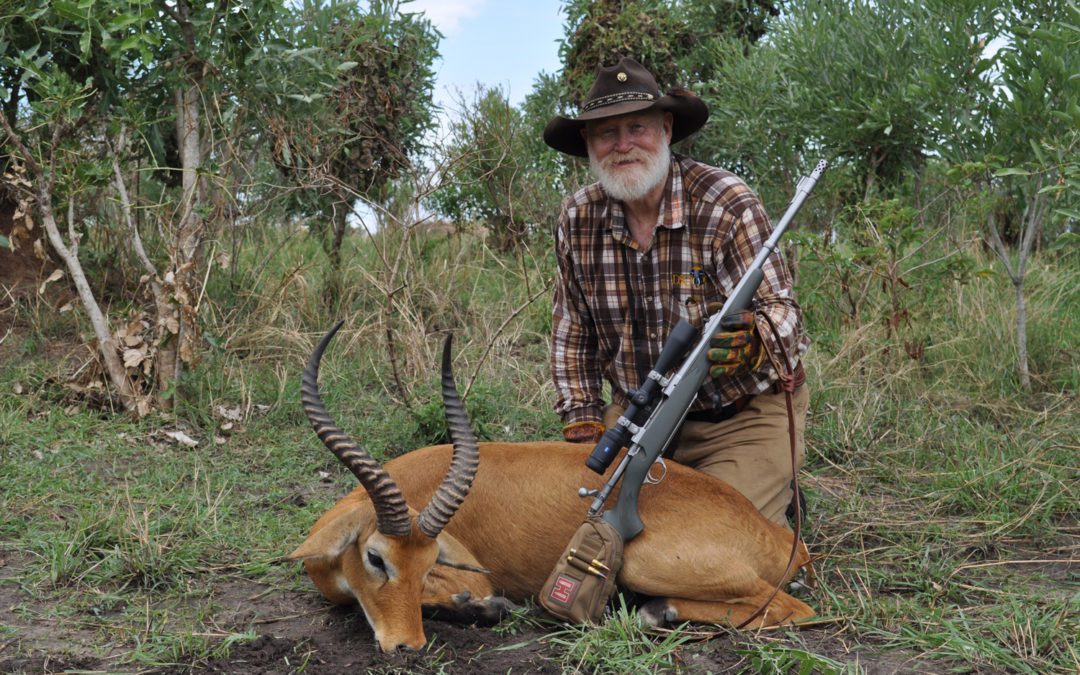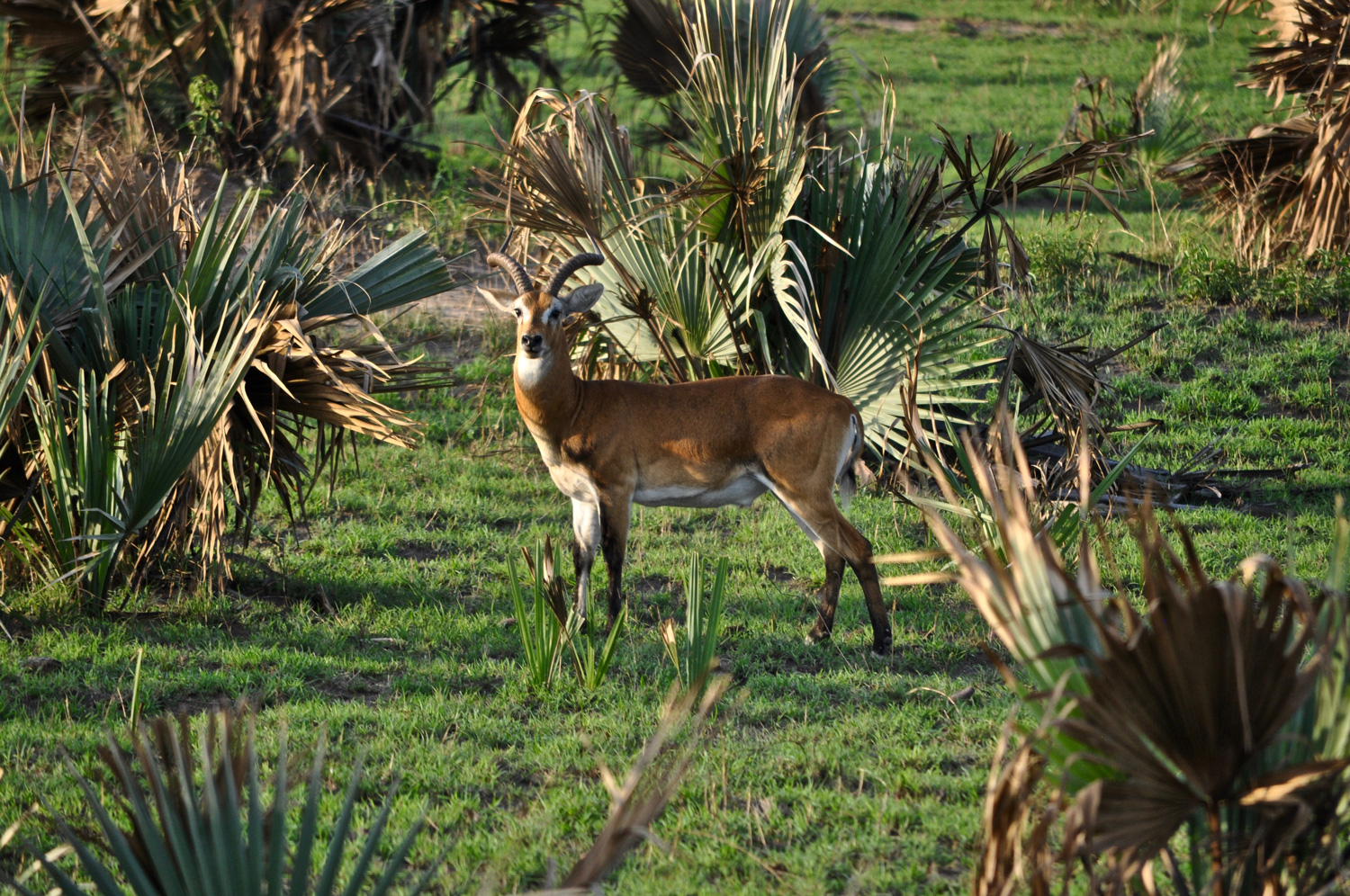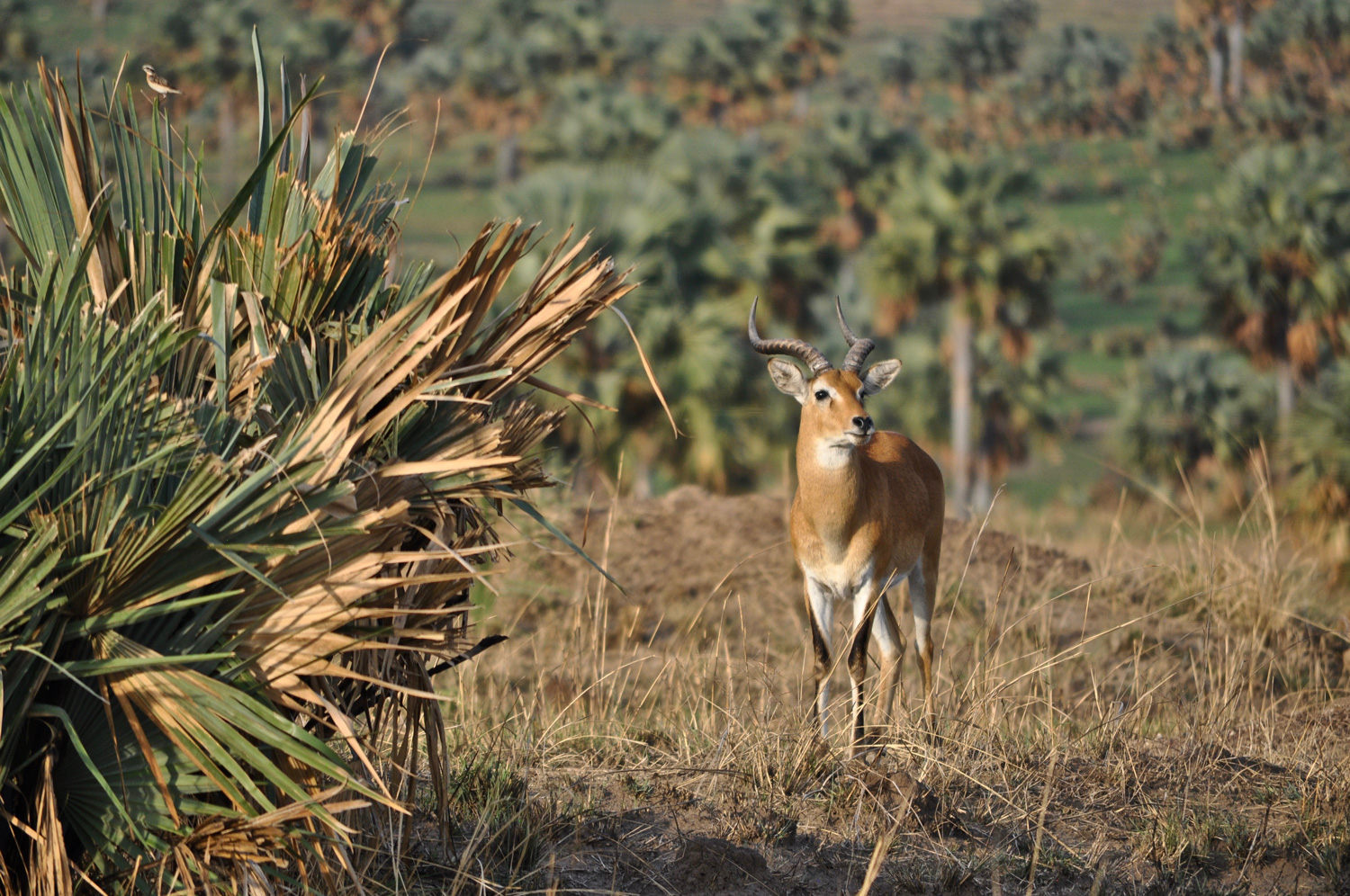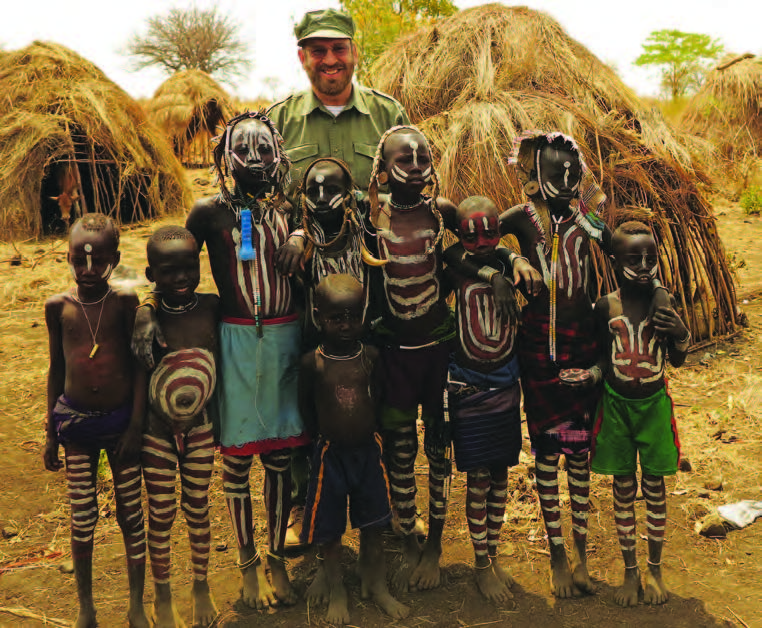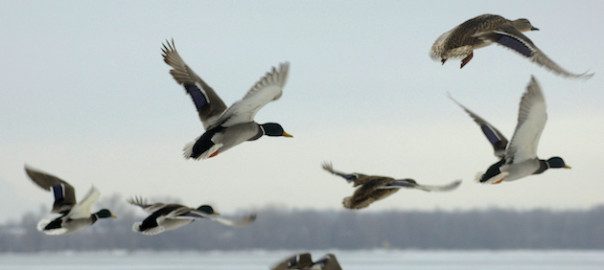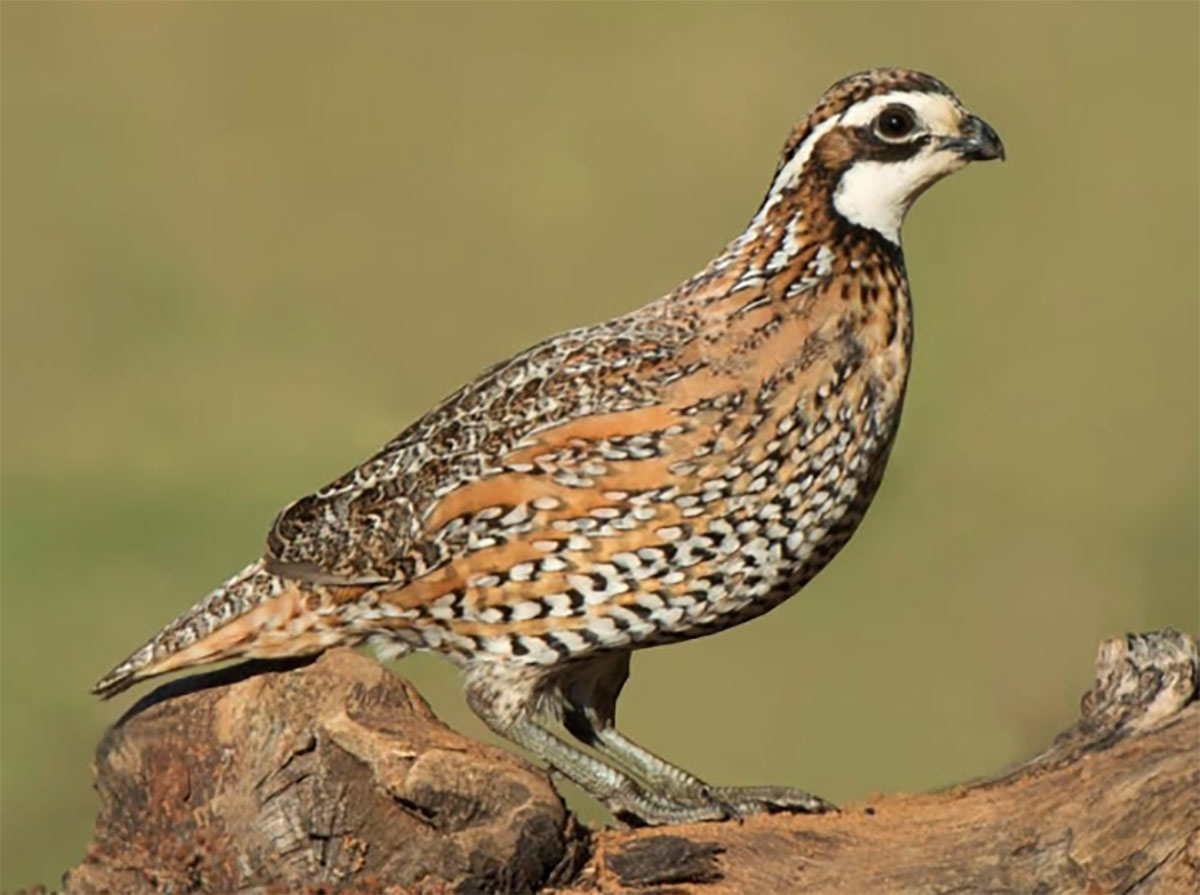A hand from behind tightly gripped my shoulder, tugging me backward in mid-stride.
Startled, I turned. With his left hand, Strawberry pointed right, through a ragged opening in the palms. There stood a Nile buffalo bull, reminiscent of an enraged Spanish fighting bull. “Don’t move! Stand absolutely still. A sudden movement could cause him to charge,” came the whispered instructions from my PH.
I did my best imitation of the small bronze I had seen of “Papa” in the Hemingway Bar at the Masindi Hotel in route to nearby Murchison Falls. Thankfully the wind was blowing from the bull toward us. He had sensed and possibly heard our approach.
Moments later the bull turned and walked away. Tim Fallon my hunting partner, Christian Weth our Professional Hunter, Strawberry our tracker, the game scout whose name I could never remember and I, all breathed an audible sigh of relief. “Ever onward! The Uganda kob should only be a hundred yards distant,” said Christian, who then added, “Larry, remember the kob’s gold color, watch for patches of it. The brush is thick. We may be nearly on top of them before we see them. In the group there are at least two old and long horned rams. Shoot the one I tell you to.”
The Ugandan kob (Kobus kob thomasi) is a subspecies of the kob, an antelope found in sub-Saharan Africa. The handsome beast even appears on Uganda’s coat of arms.
I nodded, seated a Hornady 300-grain DGX round into my .375 Ruger Guide Rifle, then pushed on the safety and cranked my Trijicon variable to its lowest magnification. I would be ready when the opportunity presented itself.
For the past several days Tim Fallon and I had been hunting Uganda, the “Jewel of Africa”, the land of the famed “Karamojo” Bell, Hemingway, Roosevelt, not to mention many of the 1950’s and 1960’s movie stars. A couple of days previous Fallon and I had fished for Nile perch near where Hemingway and Mary, his wife at the time, had erroneously been reported to have died in an airplane accident.
Fallon and I had been tremendously impressed by the amount of game we had encountered on our Uganda safari. Neither of us had been around to experience what some refer to as the “Golden Age of Safari.” But there could hardly have been more animals in those days than the numbers we had been seeing, including hundreds of gorgeous Uganda kob, or “Uganda Gold”.
Stalking through palms and thorn brush, knowing elephants and buffalo abound, made for the occasional bloody anxious moment. “Pop!” came the snapping of fingers from behind. I turned to look, knowing from previous days, Strawberry had obviously seen game and was wanting our attention. A long, bony finger pointed toward a narrow lane, into which stepped a long-horned kob. Christian, carrying my shooting sticks, set them up in one easy motion to perfect shooting height.
On sticks, I stepped behind the rifle and watched my PH wag his index finger, indicating not to shoot. He raised finger to lips, then pointed toward the opening slightly to our left. A second kob stood behind a screen of brush. I saw Christian flex his trigger finger, indicating “shoot when you can”. As quietly as possible I took the rifle off safety, peered through my scope and waited.
When the kob’s backswept horns and shoulder appeared, I grunted softly. The old ram stopped, and before he could turn to look at the source of the sound I gently pulled the trigger.
The ram disappeared into the palm and brush. I knew the shot had been good….
He did not go far!
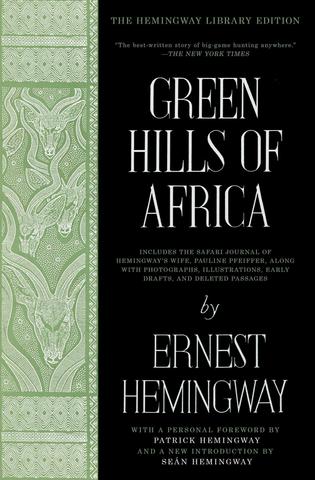 When it was first published in 1935, The New York Times called Green Hills of Africa, “The best-written story of big-game hunting anywhere,” Hemingway’s evocative account of his safari through East Africa with his wife, Pauline Pfeiffer, captures his fascination with big-game hunting. In examining the grace of the chase and the ferocity of the kill, Hemingway looks inward, seeking to explain the lure of the hunt and the primal undercurrent that comes alive on the plains of Africa. Green Hills of Africa is also an impassioned portrait of the glory of the African landscape and the beauty of a wilderness that was, even then, being threatened by the incursions of man. Buy Now
When it was first published in 1935, The New York Times called Green Hills of Africa, “The best-written story of big-game hunting anywhere,” Hemingway’s evocative account of his safari through East Africa with his wife, Pauline Pfeiffer, captures his fascination with big-game hunting. In examining the grace of the chase and the ferocity of the kill, Hemingway looks inward, seeking to explain the lure of the hunt and the primal undercurrent that comes alive on the plains of Africa. Green Hills of Africa is also an impassioned portrait of the glory of the African landscape and the beauty of a wilderness that was, even then, being threatened by the incursions of man. Buy Now
